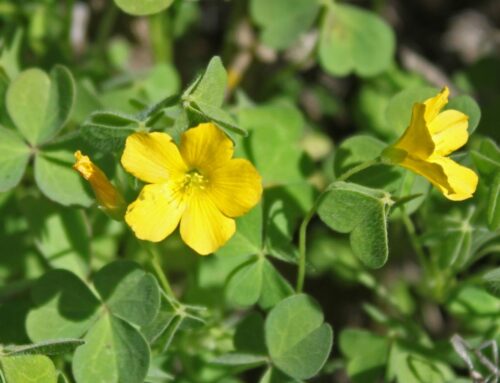Overhead watering is a major contributor to fungal and bacterial diseases, such as anthracnose, bacterial spot, blight, anddowny mildews.
By Kate Russell

Kate Russell
You’ve probably heard it a hundred times — overhead watering is bad. But how can overhead watering be bad when plants have been rained on for a very, very long time?
Usually, when it rains, the sky is overcast and temperatures are cooler. When gardens get watered with a hose, it’s often in the afternoon. There you are, standing in your garden with a hose in your hand after a long day at the office. Dust washes away and plants seem to be refreshed from above and below. But you may be causing more harm than good with overhead watering. It’s all a matter of timing because when leaves stay wet at night they are more likely to get sick.
Overhead watering is a major contributor to fungal and bacterial diseases, such as anthracnose, bacterial spot, blight, downy mildews, and many others. Plus, if you have one sick plant, droplets from a sick plant can be bounced onto healthy neighbors with overhead watering, spreading diseases.
Overhead watering is wasteful. On a hot day, as much as 30 percent of the water ends up running off or evaporating. Some of that evaporation occurs before the water ever reaches the plant. The rest of it happens when water lands on sun-warmed leaves. Overhead watering also contributes to erosion and groundwater contamination.
Chemicals found in tap water also impact on plant health. Most of Morgan Hill’s soil is alkaline clay, with a pH of 7.7 and the tap water has a pH range of 7.0 to 8.7. Plants grow best when soil pH is between 6.0 and 7.0. If your tap water is part of the problem, you may want to supplement irrigation with rainwater collected in rain barrels.
Besides sprinklers and overhead watering, there are other options.
 Drip systems are efficient, but they tend to get clogged in areas with hard water.
Drip systems are efficient, but they tend to get clogged in areas with hard water.
Furrow irrigation lets you lay a hose at one end of each furrow and let it fill up, watering deeply.
Hand watering at ground level is very efficient, allowing each plant to be watered according to its needs, but time-consuming.
Soaker hoses provide a slow release of water, excellent for raised beds, tree rings, and traditional garden rows. Sub-irrigation systems are highly efficient underground watering systems, but expensive.
Conservative watering reduces weed growth and helps keep nutrients in the soil where your plants can reach them. Mulch helps, too.
 When you water, water deeply. This encourages roots to grow downward where they can find their own water and be protected from surface exposure.
When you water, water deeply. This encourages roots to grow downward where they can find their own water and be protected from surface exposure.
And be sure to select plants suited to grow well in your microclimate, minimizing the need for irrigation in the first place.
If you love watering your garden with a hose, do it in the morning. This will give leaves time to dry off during the day.




